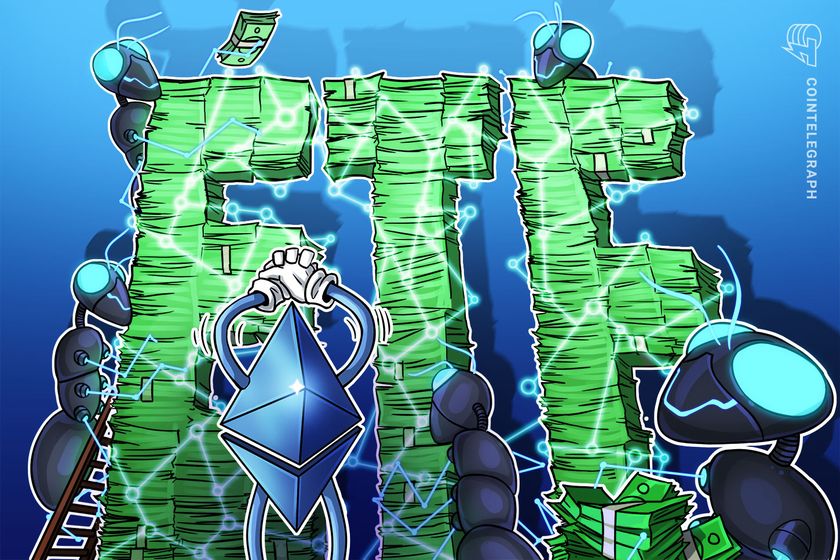Layer-two scaling solutions solve enterprises’ public blockchain challenges

Will layer-two scaling solutions solve all the challenges that enterprises face with public blockchains?
At the end of 2019, research firm Forrester and Big Four firm Ernst & Young, or EY, published a report surveying the adoption of public blockchains by enterprises. Findings revealed that 75% of respondents were likely to use a public blockchain in the future.
Although this was the case, the report also found that most enterprises were still using private blockchains to ensure security, privacy and scalability. What was also noted in the survey as the top three concerns regarding public blockchain networks were a lack of maturity, security and privacy issues.
Fast forward to 2021 — these concerns remain. Meanwhile, advanced solutions are in the process of being implemented to combat these issues for the enterprises considering public blockchain networks.
For example, one of the most important developments for enabling the leverage of public blockchains is known as layer-two scaling solutions. While layer-two networks are not a new concept, many layer-two scaling solutions geared toward enterprise requirements are currently being developed.
Tas Dienes, ecosystem support for the Ethereum Foundation and chair of the Enterprise Ethereum Alliance Mainnet working group, told Cointelegraph that layer-two scaling solutions are primarily intended to address the transaction throughput limitations of decentralized blockchains, on layer-one networks:
“Instead of conducting all of your transactions directly on the blockchain, you can run on top of a Layer 2 instance which can handle a lot more transactions per second at a much lower cost per transaction. But the key thing is that Layer 2 is secured by Layer 1, so you still get many of the same security assurances that are provided by the underlying blockchain.”
Layer-two scaling solution for enterprise needs
According to Dienes, the most obvious benefit of a layer-two solution is that an application running on the network is no longer subjected to the throughput limitation of the underlying blockchain. This is extremely important, as the Ethereum blockchain network has been criticized over time for its ability to process very few transactions per second.
This solution was further commented on by Anna Frankowska, chief commercial officer of Aventus Network — a layer-two blockchain protocol for Ethereum transactions — who told Cointelegraph that Ethereum’s current throughput of 15 transactions per second isn’t nearly enough. To put it in perspective, “The Visa network alone handles approximately 17,000 transactions per second,” she said.
With layer-two solutions, Dienes explained that enterprises now have the best of both worlds because of “high throughput and low transaction cost, as well as the strong security of a public chain and the ability to interoperate with other applications built on it,” he remarked. This is a step up from the previous leveraging of private blockchain networks done by enterprises, due to the semi-centralized chains that are capable of handling more transactions per second than fully decentralized public chains.
Dienes further mentioned that layer-two solutions can also help address other issues enterprises have with public blockchains. For example, privacy is one of the greatest concerns organizations face when it comes to leveraging a public blockchain network. In fact, 50% of the respondents surveyed in the EY and Forrester 2019 report listed privacy as their main concern.
Certain layer-two technologies have been developed to specifically address this, Dienes noted, stating that enterprises can now deploy a private layer-two instance that keeps sensitive information away from layer-one networks. This increases privacy, and some of the interoperability and security benefits of a layer-one network will also remain. He further commented that this, combined with zero-knowledge proofs, is even more powerful for enterprises using layer-two solutions on public networks like Ethereum, which has become a popular platform for business use cases.
In regard to security, layer-two solutions can address enterprise challenges like data locality, which is another major concern for enterprises considering public blockchains. For example, Dienes commented that enterprises storing data in a particular location for compliance purposes can use a layer-two server to run that data in a known location by a known entity.
Uncovering different layer-two solutions
While layer-two solutions can solve many of the challenges enterprises face in regard to public blockchain adoption, Frankowska mentioned that layer-two solutions can also help ease organizations into using private blockchain in public networks, adding:
“They can start with a permissioned Layer 2 chain, with natively implemented business logic, and gradually open it up to the public. Most enterprises want to dip their toes into Layer 2 waters before they dive in completely.”
This is an important point, as many enterprises today are still leveraging private blockchains and may be hesitant to switch to open networks. It’s also crucial for enterprises to understand that there are still many layer-two scaling solutions being implemented and developed. As such, there isn’t a “one-size-fits-all” solution for an enterprise’s needs
Despite the hesitation, hybrid layer-two solutions are also emerging. “There are new developments almost every week in this rapidly evolving field,” Dienes said, which are able to combine some of the best properties of various technologies together.
He further explained that a layer-two category gaining traction with many organizations lately is “rollups.” According to Dienes, rollups “roll up” a batch of transactions on layer-two networks and write the transaction description data to layer one:
“By computing the transactions on L2, and using L1 only for storing the transaction descriptions and ensuring that the computation was done correctly, the total throughput of the system can be increased by a couple of orders of magnitude.”
The author of the Ethereum white paper, Vitalik Buterin, also recently stated that rollups are coming to the Ethereum ecosystem soon, noting that this could improve Ethereum’s transactional throughput by 100 times.
Different types of rollups are being developed for various instances, Dienes mentioned. This is where zk-Rollups and Optimistic Rollups use different mechanisms to enforce transaction correctness, enabling different tradeoffs in things like transaction latency and withdrawal delays.
Moreover, there are a number of layer-two scaling solutions that use layer one for security, but store transaction data off-chain, or not on layer one. “Validium, plasma, and state channels are the major ones. Because they don’t write as much data to L1, they can provide much higher throughput than rollups, at the cost of decentralization,” Dienes remarked.
Challenges navigating the vast layer-two ecosystem
While it’s notable that so many layer-two developments have been made, the vast ecosystem may be challenging for enterprises to navigate.
Dienes explained that a main challenge for newcomers is that there are a lot of different layer-two technologies, each with its own unique strengths and weaknesses. As a result, the companies creating the layer two must tailor it to the needs of each applicant, in order to maintain a level of security and success.
For example, Dienes mentioned that off-chain data scaling solutions — like Validium, Plasma and state channels — may very well be suited to certain types of enterprise applications where it’s acceptable to trust a known entity to store this data. “This category of solutions has other enterprise-friendly characteristics such as the potential for greater privacy compared to rollups, greater isolation from the resource demands of other applications (like CryptoKitties), and control over where data is stored,” he remarked.
While Dienes’ recommendations may be helpful, understanding the capabilities of what layer-two solutions can provide for certain use cases is still not straightforward for many organizations. Fortunately, as the space matures, this could become easier over time, as more solutions may eventually be highlighted for enterprise requirement
This may be easier said than done, however, as Frankowska pointed out that there will always be continuous security concerns, issues around volatility, uncertainty regarding the regulatory landscape, and scepticism regarding what can seem like a panacea. “That’s why not all Layer Two solutions are created equally. On top of scaling, you need to address the issues of price stability, interoperability and security, too. One missing pillar and the temple crumbles,” she commented.









